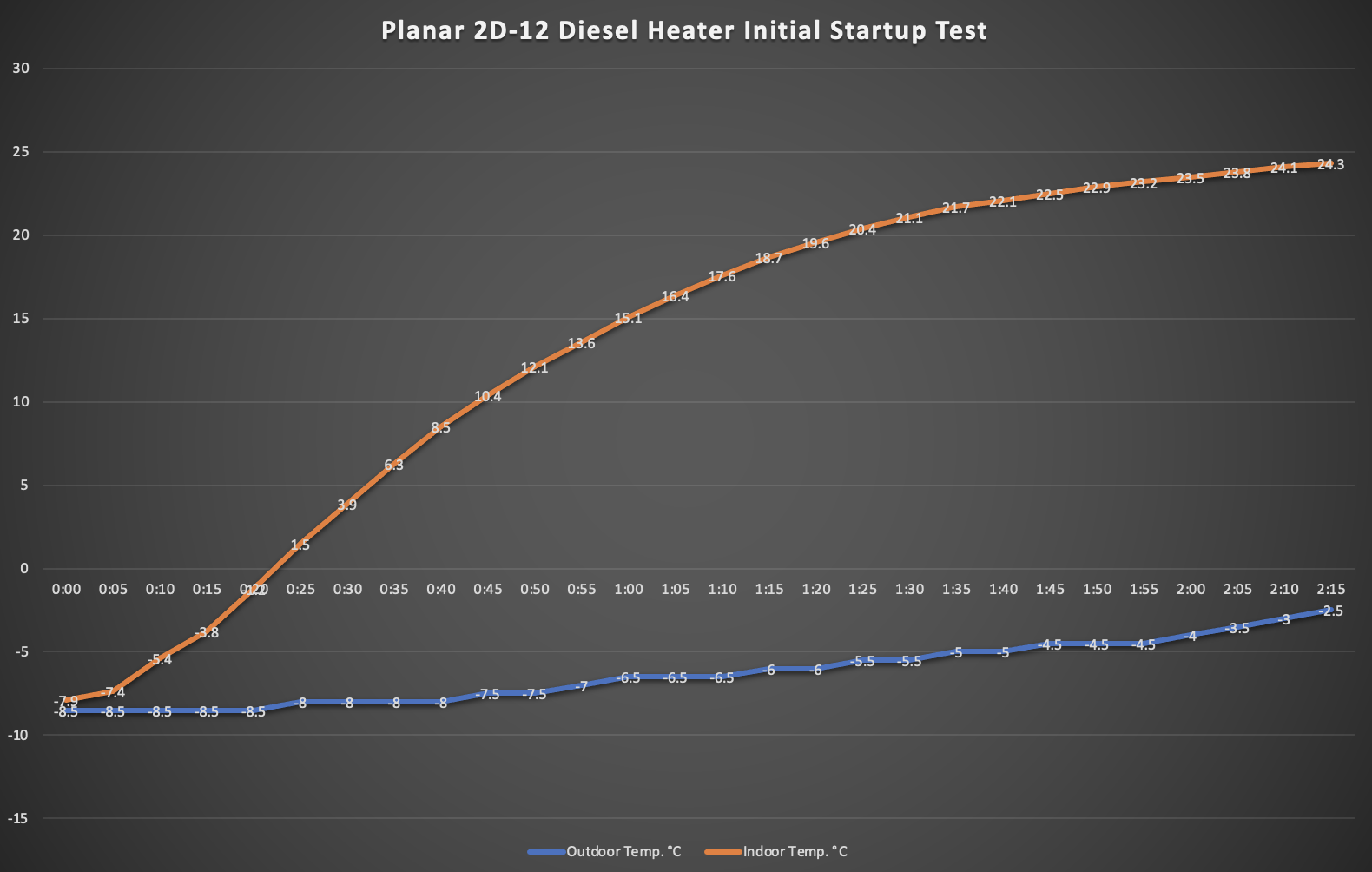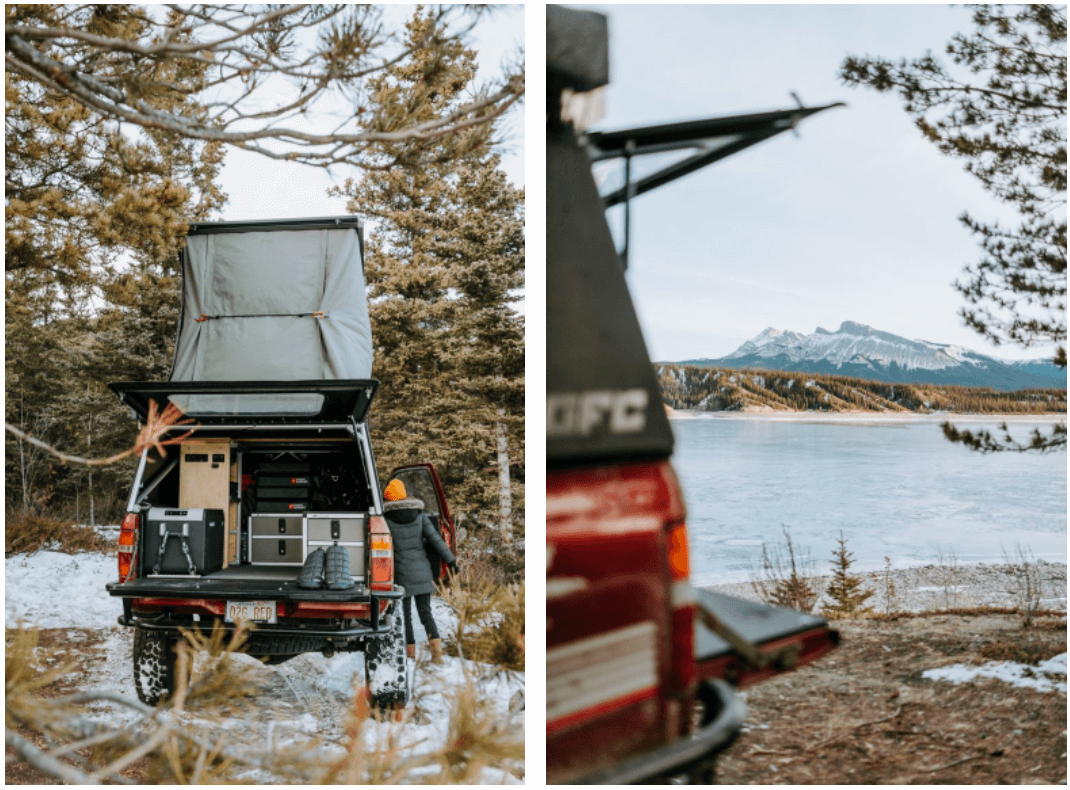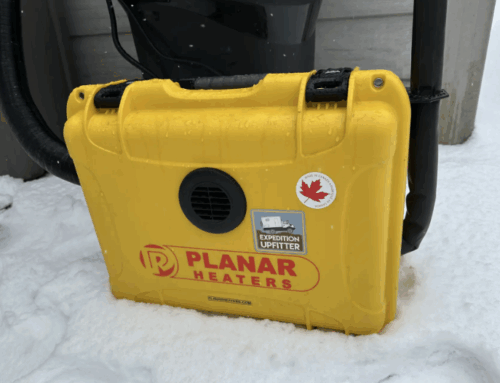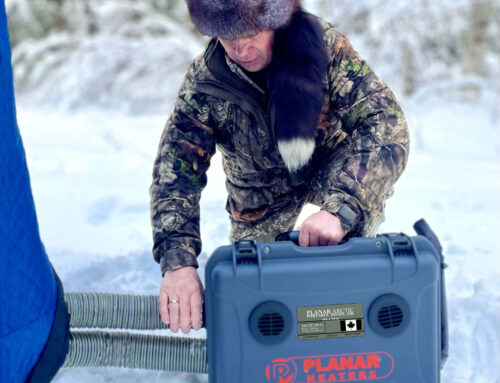Field Tested :: Planar Diesel Air Heater 2D-HA-PU5-(TR) Truck Kit. The original article was made by Richard Giordano from Expedition Portal
As the wind howls across a frozen lake, our 1990 Toyota Pickup sways back and forth. It’s winter in the Rocky Mountains, and the snow falling sideways from the dark grey sky is proving it. We hop into our Go Fast Camper, battered by 60-kph gusts, and switch on the heater, cranking the heat up as high as it goes. Outside, the sunsets, and the temperature drops, but we’re stripping off our down jackets and kicking off our boots within minutes.
We’ve gone soft. Maybe it was our recent winter trip to Tuktoyaktuk, Northern Territories, or another long, cold season in the Canadian Rocky Mountains? Our future plans include a long-term trip around the world. Unlike our 18-month road trip down the Pan-American Highway, where we chased summer by driving south, we’ll be at nature’s whim next time around and very likely travelling in colder temperatures. In order to extend our travel season and limit the amount of time and money spent thawing out in hostels or hotels, we decided to install a diesel heater in our small camper.

Powered by propane, gasoline, or diesel, there are a wide variety of heaters on the market. Originally designed for boats and long-haul trucks, these safe, compact, and fuel-efficient air heaters have become popular in the overlanding community. Many of our fellow travelers warned against propane heaters due to their tendency to build up condensation indoors, along with the potential struggle of regularly finding propane in foreign countries. Diesel or gasoline options seemed like the best fit for us.
A gasoline air heater seemed promising as we could easily tap into the existing vehicle gas tank. We discussed our quandary with a Webasto sales representative, who recommended against the gasoline air heater. Although installation would be straightforward, gasoline air heaters have a tendency to leave carbon deposits on the interior walls of the heater’s combustion chamber, potentially leading to ignition issues and additional maintenance over time. That may be satisfactory for someone using their vehicle locally or seasonally (since they always have a service center or warm garage close by), but on a long-term trip far from home, we don’t want to be disassembling a gasoline air heater for routine maintenance.

This information (along with our budget) led us to the Planar Diesel Air Heater. The Russian-built unit is designed to run on any pump diesel or hardware store kerosene fuel. At $898, it’s a good value that comes with a 2-year warranty and local support. Plus, the installation instructions gave me an opportunity to brush up on my Cyrillic script.
As with any heater being used in an enclosed space, we also installed a carbon monoxide detector in the camper for safety.
Planar Diesel Air Heater: The Initial Start-up Test
The basic PU-5 controller requires a mere click of the on/off button and a turn of the heater control knob to set the heat output temperature. But how well does this 2-kilowatt diesel air heater work in 150 cubic feet of uninsulated camper? Keep in mind that the sides of the camper are aluminum and fabric, whereas the sides of the truck box are thin 1990’s Japanese steel. There is very little keeping the heat from escaping this living space.
I completed a start-up test to investigate how quickly the heater could warm the camper in winter conditions. I also wanted to confirm how much fuel the heater consumed and how much power it would draw from our house battery. These two technical details are provided by the manufacturer, but I chose to double-check them.
The Planar heater had its task set out for it. The truck had been sitting all night and was thoroughly chilled to -8.5°C (16.7°F). Not only did the heater have to warm the air in the interior of the camper, but the presence of steel, aluminum, and wood that make up the GFC and interior would lengthen the time it took for the space to heat up.

The start-up test required four steps. The first involved cranking the heater up to its highest setting and running it for five hours. Next, I measured the ambient temperature and inside temperature/humidity every five minutes over the duration of two hours. Finally, I measured fuel usage (1-K kerosene) and amperage draw. Knowing how long it takes the heater to warm up the interior space allows us to have realistic expectations when climbing into a cold camper after a ski day or long winter hike, or perceiving at what point to start pre-heating the space before heading inside to sleep.
Twenty minutes after I initiated the test, the camper had warmed to a balmy 0°C (32°F). Twenty-five minutes after that, the space was toasty enough to take off a jacket. After 1.5 hours, the temperature reached a state of equilibrium where the interior of the camper remained at 26°C (78.8°F) higher than the outdoor temperature.

Measured fuel usage over five hours: 0.265 litres per hour (0.07 gallons per hour), set on maximum temperature.
Measured electrical draw (after initial start-up): 20 watts/1.56 amperes, set on maximum temperature.
Based on this data, during a winter night, let’s say over 10 hours, this system would use 15.60 amp-hours of battery capacity and 2.65 litres (0.7 gallons) of fuel. The installed 5.5-litre (1.45-gallon) auxiliary fuel tank has the capacity to fuel a couple of those cold nights with the heater running at maximum capacity.
In practice, we use the heater to warm up the camper before bed and then again in the morning when we need the motivation to drag ourselves out of the warm cocoon of -18°C (0°F) down sleeping bags. In this scenario, the 5.5 litres (1.45 gallons) of fuel lasts just over a week.
We knew we’d enjoy the pure unadulterated warmth, but a surprising benefit is the heater’s inherent ability to decrease humidity. Wet clothes can take forever to dry in cold or humid climes, but the diesel heater does a fantastic job of drying anything within the camper envelope. Hanging wet clothes to dry is now a realistic endeavour. During our initial start-up test, we saw the humidity in the camper drop from 31 percent to 10 percent within one hour.

Conclusion
This heater system allows us to remain comfortable when the ambient temperature is well below freezing, thus extending our camping season or allowing us to escape the cold grip of Old Man Winter during our long-term travels. Keeping warm in cooler temperatures means we can limit the amount of hotel or hostel stays, save some dollars, and spend more time off the grid and in the mountains if we so choose.
You can’t always have your cake and eat it too. This Planar diesel air heater is a good value but still requires 898 precious greenbacks. It takes up valuable space in a small vehicle and adds wiring, fuel, intake, and exhaust complications (both during installation and potentially on the road), not to mention having to regularly fill the auxiliary diesel tank.
For some, investing in a good-quality sleeping bag or warmer outerwear may be the better option. But for us, we’re taking the potential downsides associated with complications to enjoy the epic winter adventures while soaking up the warm, dry heat inside our cozy home on wheels.

Manufacturer Technical Details
Heat Output: 0.8 kilowatts | 2,700 – 6,850 British thermal unit
Fuel Consumption: 0.10 – 0.2 4 litres per hour | 0.03 – 0.06 gallons per hour
Power Consumption: 10 – 29 watts | 0.8 – 2.24 amps
Weight: 7.0 kilograms
Dimensions: 324 x 118 x 119 millimeters
Additional Products Purchased
Controller cable extension
5.5-litre auxiliary kerosene/diesel tank






